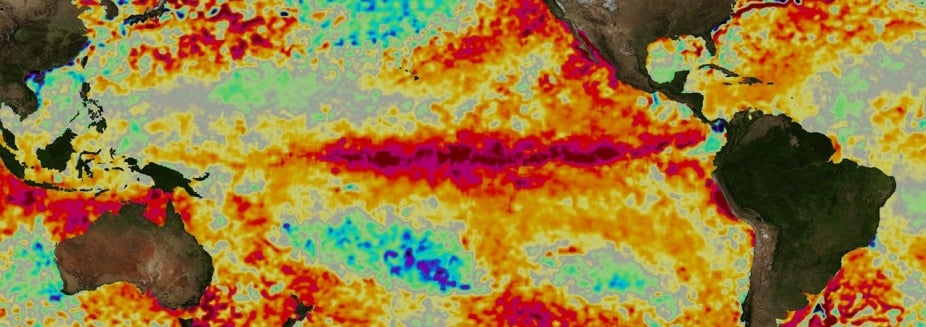What's going on with El Niño?
2016 is an El Niño year. Sea surface temperatures are the warmest we’ve ever observed, and global average temperatures for 2015 were the highest on record, partly as a result. But what does that mean for winter here in Colorado? NCAR scientist Kevin Trenberth will answer this question and more, including: What is El Niño? Where did its name come from? How often does it occur? What are its impacts? Is the changing climate changing El Niño? Let us help sharpen your El Niño IQ.
Kevin Trenberth
Kevin Trenberth is a distinguished senior scientist in NSF NCAR’s Climate and Global Dynamics Laboratory. From New Zealand, he obtained his Sc.D. in meteorology from the Massachusetts Institute of Technology. He was a lead author of the 1995, 2001, and 2007 Scientific Assessment of Climate Change reports from the Intergovernmental Panel on Climate Change. The IPCC was recognized for this effort with the 2007 Peace Prize, which it shared with Al Gore. He served from 1999 to 2006 on the Joint Scientific Committee of the World Climate Research Programme and chaired the Global Energy and Water Exchanges scientific steering group from 2010 to 2013. He also has served on many national committees. Dr. Trenberth is a fellow of the American Meteorological Society (AMS), the American Association for the Advancement of Science, and the American Geophysical Union (AGU), and an honorary fellow of the Royal Society of New Zealand. In 2000 he received the Jule G. Charney award from the AMS; in 2003 he was given the NCAR Distinguished Achievement Award; in 2013 he was awarded the Prince Sultan Bin Abdulaziz International Prize for Water as well as the Climate Communication Prize from AGU. He edited a 788-page book, Climate System Modeling, published in 1992 and has published 530 scientific articles or papers, including 62 books or book chapters and over 244 refereed journal articles. A presenter of many invited scientific talks, Dr. Trenberth has also appeared in a number of television and radio programs, as well as newspaper articles. He is listed among the top 20 authors with highest citations in all of geophysics.
